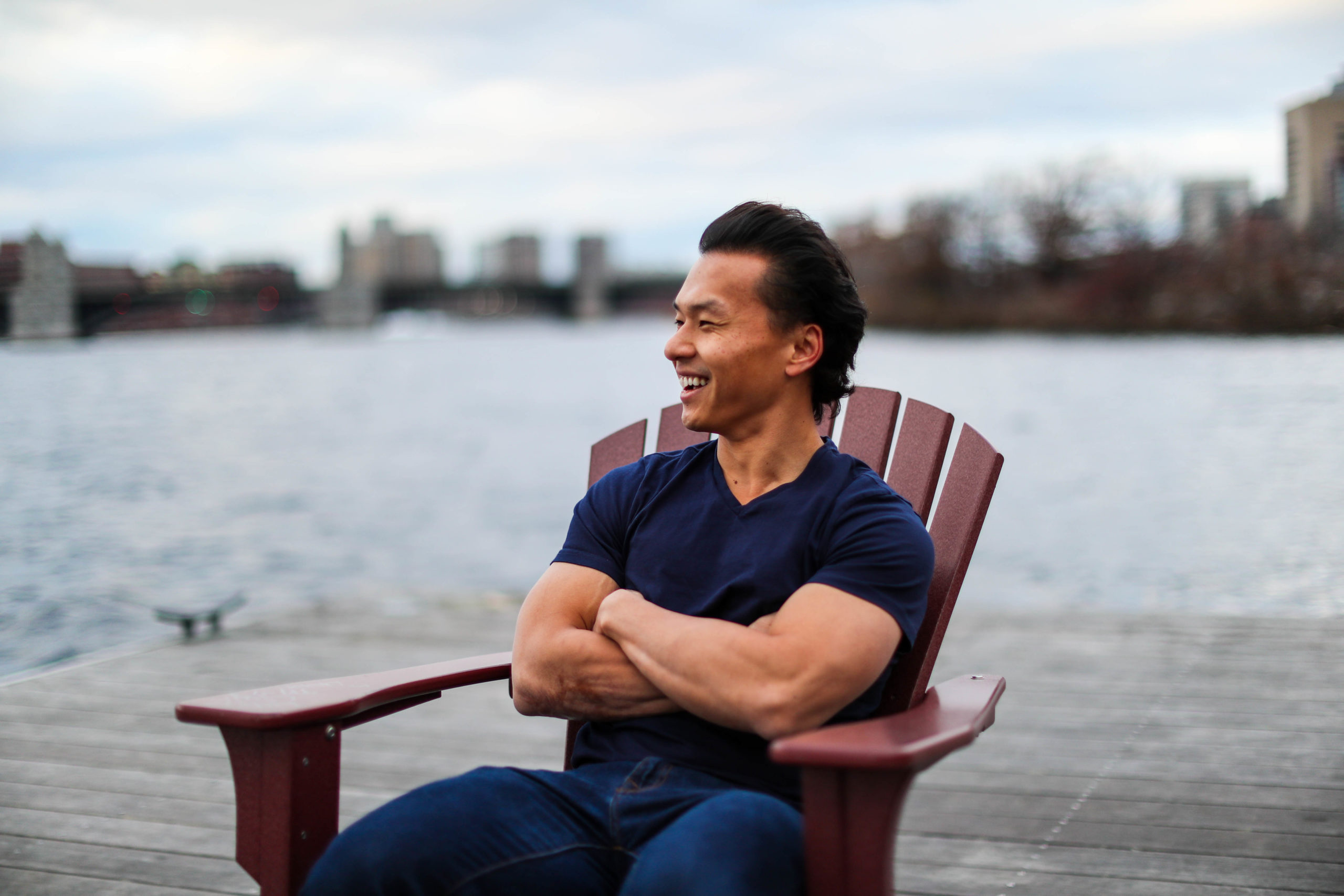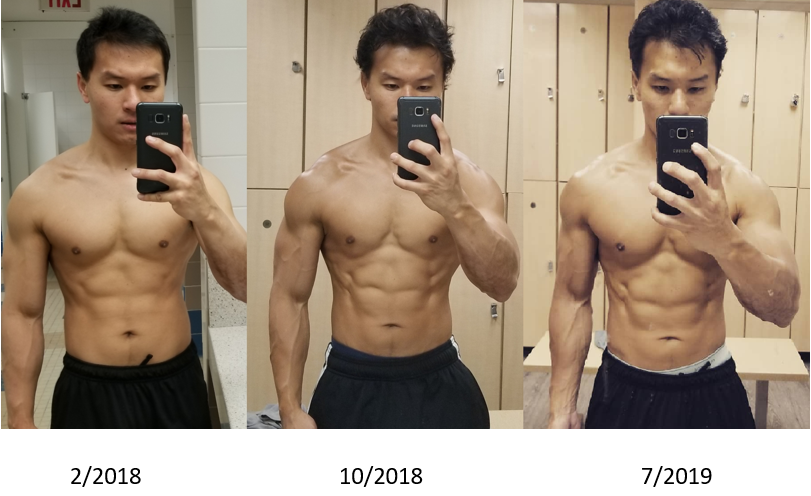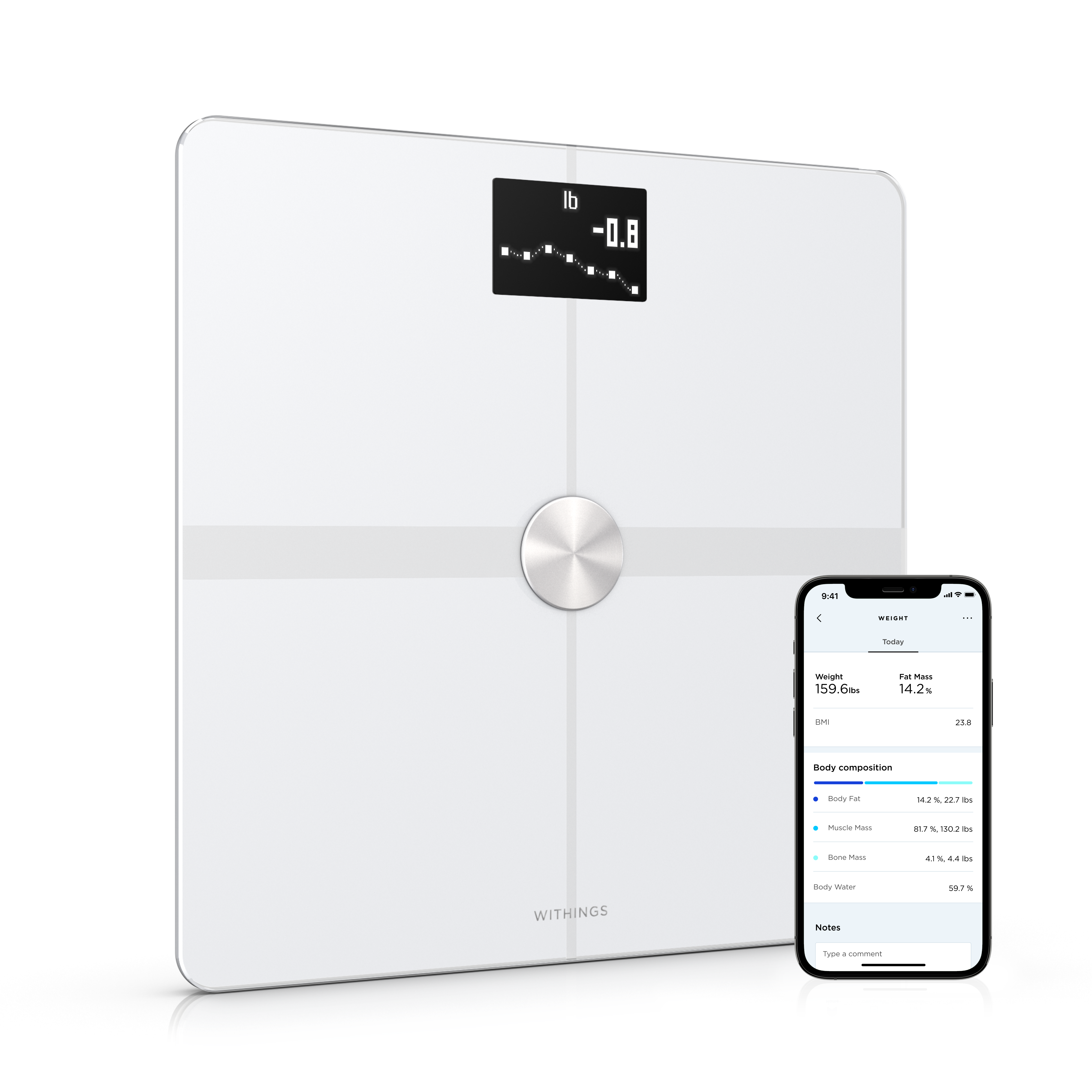
Meet a dynamic doctor who watched his weight go up during his intense medical training before bringing it successfully back down with the help of data from his Withings smart scale.
We first reached out to Dr. Shuhan He, an emergency medical doctor based in Cambridge, MA, and founder of conductscience.com, after reading a fascinating article about how he helped to bring new anatomically correct emojis into the world.
When we contacted Dr. He, we did not know that he owned a Withings smart scale. But we found out he had been a long-term Withings scale user for 5 years, and most importantly, we learned that he had a real and really cool health success story.
Dr. He is interesting for many reasons. For one thing, he’s not a life-long couch potato who suddenly found fitness. At a young age, he had many fitness accomplishments under his belt, including climbing Mt. Kilimanjaro and running a 155-mile ultramarathon.
He also didn’t buy a scale and then suddenly lose weight. He bought a Withings smart scale because he had the suspicion that the intense medical life might impact his health and fitness—and it did.
Below is his story, in his own words, followed by some of his diet and exercise habits. And to us, he added, “I really hope what I convey is that this was a device that actually made a huge impact on my life.”
In the beginning…

When I was in my early 20s, I was really, really fit. I placed in my age group for a marathon. I regularly ran something like 10 marathons a year. I’ve climbed Mt. Kilimanjaro, to Everest base camp, and also scaled the Willis Tower stairs [in Chicago]. My uncle was a track and field Olympian, so it sort of ran in the family. This is a photo of me in 2010 finishing up a 250km ultramarathon race in the Gobi Desert, known as one of TIME magazine’s hardest races in the world. I was the youngest man to do so. My running weight was 130lbs at 5’9”, so I was skinny, but fast.
Then I went to med school. I had knee surgery about 3 years later, and that was really stressful, but I did OK. In 2015, I bought a Withings scale at the start of residency. For anyone who doesn’t know, it’s a brutally hard training program that makes you an excellent doctor, but our health suffers from it. I still have that scale to this day, 5 years later.
Medical residency, 2015-2016

Residency as a doctor is really, really hard. I spent a ton of time at the hospital, I didn’t sleep much, and I worked in the emergency department, which is an incredibly stressful job, full of late nights and frequent snacking/bad habits. I also was running a company that now employs something like 20 people, so I had two jobs. This was an incredibly stressful time in my life.
I also tracked how many times I went to the gym, and in 2016 I gained weight—a lot of weight, very quickly, and almost never exercised. I eat my stress, as they say.
One story I vividly remember. There is this place called the step-down unit in residency, where we worked 30 hour shifts every few days, that was incredibly stressful. One night, I ordered myself $100 of Indian food thinking I would eat it for both dinner and breakfast the next day, then ate THE ENTIRE THING because I was covering over 60 patients by myself as a relatively junior doctor.
Here is a photo from November 2016, at my highest weight. I had never weighed so much in my life. I was so down on myself and stressed out, and I even broke out in acne as a 29-year-old. It was one of the lowest times in my life.
I was here. Physically at the top, but emotionally at the bottom.
2018–now

Getting started

I decided to get back into shape. My goals were to maximize the time spent at the gym for purely aesthetics and core strength just to survive my medical training, and Withings made it really easy. Because of my schedule, I just needed to get in shape in really time-efficient ways. So, what I did was sit down to look at the science and how metabolism worked. I really believe in cycling, variation in growth and cutting, and intermittent fasting.
Dr. He’s diet
Dr. He followed a daily intermittent fasting diet. He ate from 11am–6pm and often ate One Meal a Day (OMAD).
His meals included:
- A whole rotisserie chicken, eaten with hummus, and some baklava. “It’s like $7 for my entire meal that day,” he said.
- Two whole tilapia, slow cooked. “Delicious,” he says.
- A 32 oz. steak with some veggies on the side: “This is more expensive, depending on the cut of the meat.”
- Slow-cooked whole chicken with garlic, spices, and black beans. “It’s $5-6 for the whole chicken, usually with spices,” he says.
- An 80g protein Greek yogurt with nuts and fruit: “I’ll dump about 40 extra grams of whey protein into it. The container of Greek yogurt costs about $4-5.”
Dr. He does consume alcohol. “I drink socially and will go out about once per week, with no limits on alcohol use when I do,” he says.
Dr. He’s workout
From January 2018 to June 2019, Dr. He worked out an average of 2.5 times per week, for an average of 9.98 times per month. He adds that this is “4 hours per week, on average.” Dr. He’s workout included weight training that followed Reverse Pyramid Training (RPT), aka lifting the heaviest weight first, then going down 5 lbs. with each set. He works out a minimum of 2.5 and a maximum of 5 hours per week, working out every other day. He alternated workouts, calling them A Day and B Day. Here’s his workout routine broken down:
- A Day: Bench RPT x5, squat RPT x5, weighted pulls x5 (1.5 hours)
- B Day: Deadlift RPT x5, overhead Press RPT x5, seal row RPT x5 (1 hour)
Results

Dr. He tracked his total body fat percentage and gave us some sample numbers. On April 13, 2018, it was 14.2 percent; on October 24, 2018, it was 11.5%, for a difference of -2.7%.
Dr. He’s total fat on April 13 was 20.4 lbs; on October 24, it was 16.8 lbs., for a difference of -3.6 lbs. His lean muscle changed too: On April 13, it was 122.8 lbs., and on October 24, it was 129.1 lbs, for an increase of +6.3 lbs. As you may know from reading our blog, exercising may lead to a gain in lean muscle mass.
Regarding the journey, Dr. He says, “Life is really short and I just want to be in shape and look great. I think it’s natural to have some percentage of body fat, around 8–11% just for maximum comfort. Below that, I get really down and feel exhausted all the time. Life is busy, and technology like that in the devices from Withings dramatically changed my life. I work out way less than I did when I was running all the time. They say the average person watches TV 4 hours a day, and that’s all I do for exercise on a weekly basis.”
Thanks for sharing your experience with us! Follow Dr. He on Twitter @ShuhanHeMD and Instagram.



